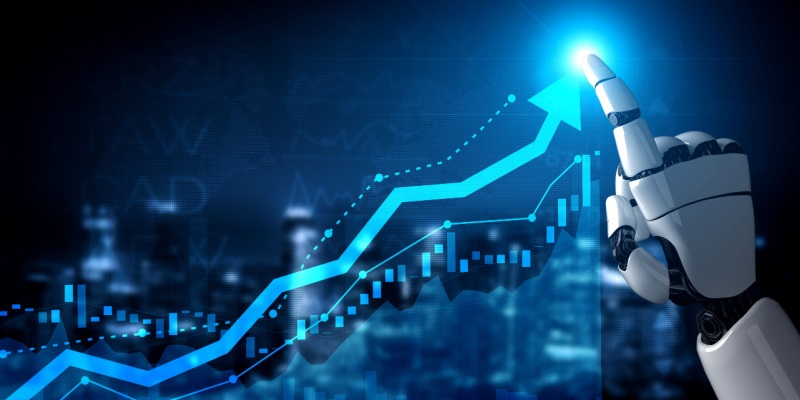AI in trading machine learning algorithms analyzes vast amounts of data and identifies patterns at a speed and scale that humans match. These algorithms process market data, news, and social media sentiment relevant information to trading signals and execute trades automatically. Many hedge funds, investment banks, and traders have adopted AI-driven strategies to gain a competitive edge in the market.
- Algorithmic trading- AI algorithms execute trades based on predefined rules and strategies, eliminating the need for human intervention.
- High-frequency trading– AI systems analyze market data and execute trades in milliseconds, taking advantage of even the slightest price fluctuations.
- Sentiment analysis– AI monitors news and social media to gauge market sentiment and predict future price movements.
- Risk management– AI helps identify and mitigate potential risks in a portfolio, ensuring better risk-adjusted returns.
Risks of over-dependence on ai
While AI has undoubtedly brought many benefits to the world of trading, there are also risks associated with becoming too dependent on this technology:
- Black box problem– Many AI trading systems are complex and opaque, making it difficult for users to understand their work and what drives their decisions. This lack of transparency leads to unintended consequences and unexpected losses.
- Overfitting– AI algorithms can sometimes be too closely fitted to historical data, causing them to perform poorly when market conditions change. Overfitting leads to false confidence in the AI system and significant losses when the algorithm fails to adapt to new market realities check over here for quantum ai trading.
- Systemic risk– Too many traders and investors rely on similar AI strategies, leading to herding behaviour and amplifying market volatility. This systemic risk is seen in the “Flash Crash” of 2010, where algorithmic trading played a significant role in a rapid market decline.
- Lack of human judgment– While AI processes data and generates trading signals, it needs the human intuition and contextual understanding experienced traders bring—overreliance on AI n leads to missed opportunities and poor decision-making in complex, nuanced market situations.
Striking the right balance
The key to successfully leveraging AI in trading is to balance human judgment and machine intelligence. Rather than unthinkingly following AI-generated signals, traders should use these tools to augment their analysis and decision-making process.
- Understand the AI system- Take the time to learn how the AI algorithm works, what data it uses, and what assumptions it makes. This will help you better interpret its outputs and recognize its limitations.
- Combine AI with human insight– Use AI as a tool to generate ideas and validate your analysis, but rely on something other than it. Incorporate your market knowledge, risk tolerance, and investment goals into your decision-making process.
- Regularly monitor and adjust– Keep a close eye on the performance of your AI-driven trades, and be prepared to adapt your strategy as market conditions change. Regularly review and update the AI model to remain relevant and practical.
- Diversify your approach-Don’t put all your eggs in one basket. Use AI as part of a diversified trading strategy, including other tools, techniques, and human judgment.

